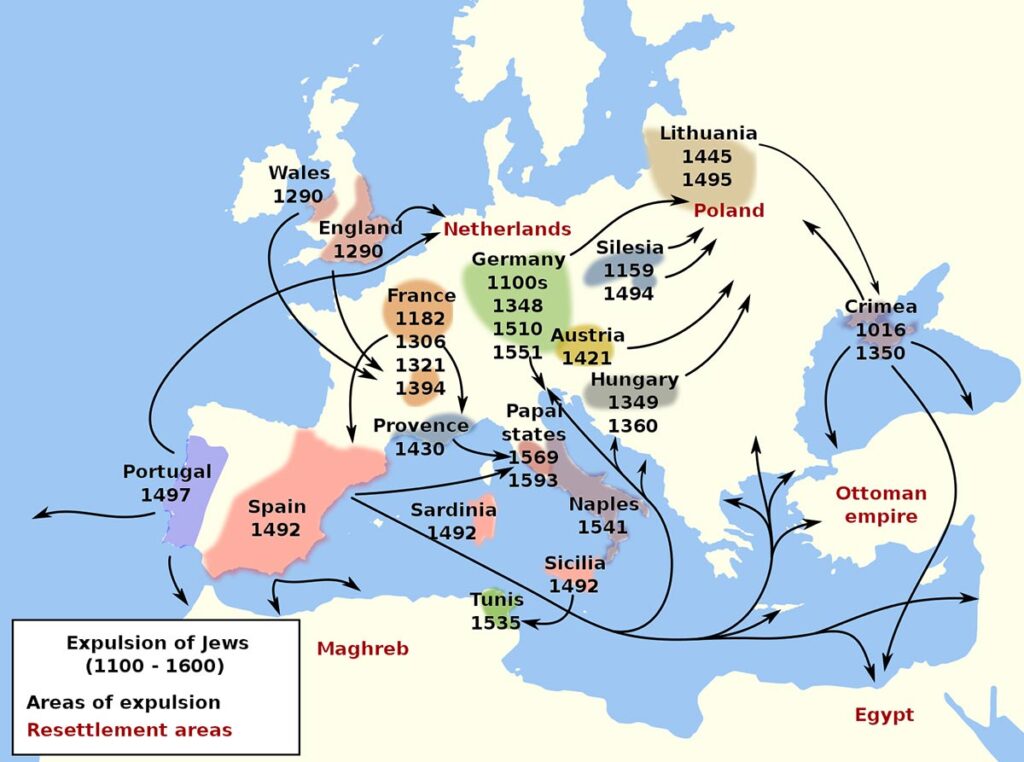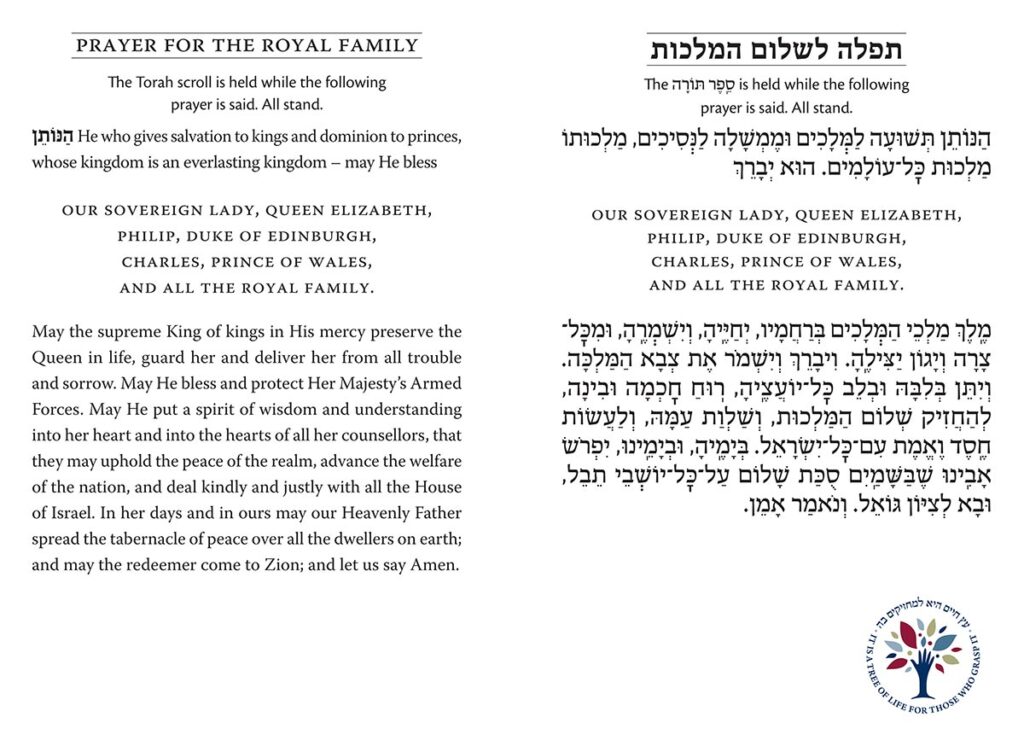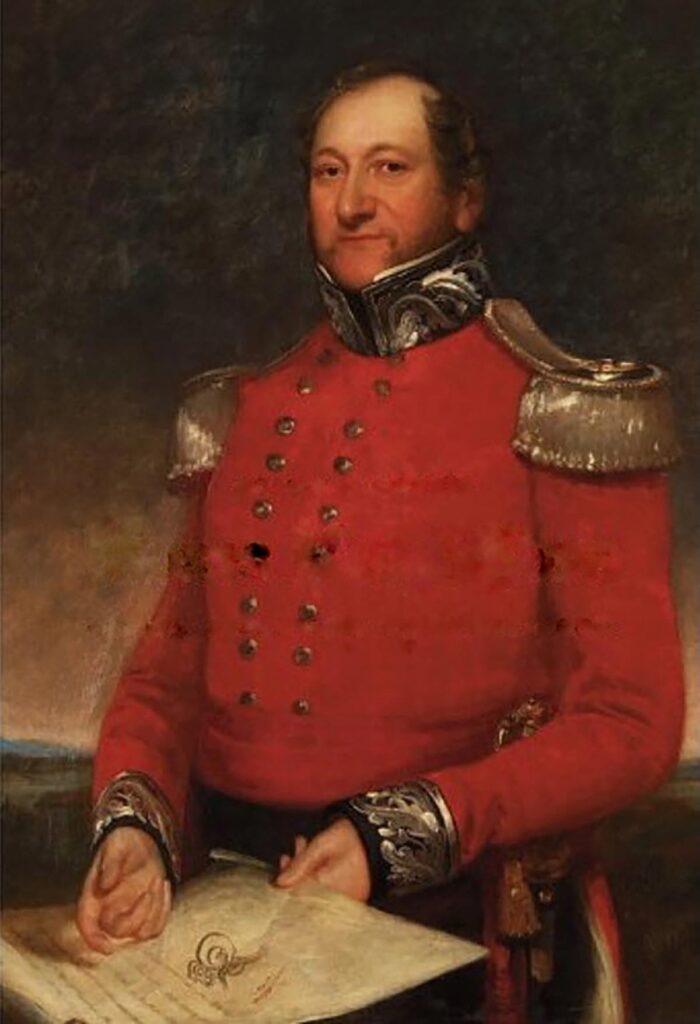
Throughout history, the British royal family has maintained a complex and ever-changing relationship with the Jewish community. This relationship has seen moments of both darkness and light, marked by periods of persecution and in more recent times, inclusion and acceptance.
Let’s dive into some of the fascinating intersections between the royal family and Jewish history and culture, including some of the key moments featured throughout Netflix’s “The Crown.”
1. A pogrom against Jews at the coronation of Richard I (1189)
The coronation of King Richard I in 1189 was marred by violence against the Jewish community.
On the day of Richard’s coronation, Jewish leaders came to present gifts to the newly crowned king. However, their gesture was met with hostility and a violent assault. Many Jews fled to the Tower of London, desperately seeking refuge to avoid being killed.

Roger of Howden, a 12th-century chronicler and diplomat, reported that only those Jews who managed to find refuge in the royal citadel or within the homes of Christian friends escaped death.
“The crusade fervor of the late 1180s was likely the driving factor in the massacres, combining with the already present anti-Jewish prejudice, economic resentment, and opposition to the crown’s relationship with the Jews,” historian Rory MacLellan wrote of the event, noting it as part of the Jewish community’s complex relationship with the Tower of London.
2. King Edward I’s royal expulsion of Jews (1290)
In medieval England, the legal status of Jews was unique, to say the least. They were considered not only subjects but also property of the Crown, unlike the rest of the population.
This status made them both protected and vulnerable. On one hand, royal officials were tasked with safeguarding Jews from public hostility. Yet, on the other, this “protection” often came with the heavy burden of arbitrary and excessive taxes levied by the Crown, especially during financial crises.
This tense dynamic reached a tipping point under King Edward I. By 1290, the Jewish community, already burdened by oppressive taxation, found their capacity to contribute to the royal treasury greatly diminished.
Confronted with financial difficulties and perhaps seeking an easy target for economic woes, Edward I issued the Edict of Expulsion on July 18, 1290, expelling all Jews from the Kingdom of England.

This drastic decree mandated that all Jews in England, a population of about 3,000 at the time, either convert to Christianity or leave the country.
The Edict of Expulsion had long-lasting effects, remaining in place throughout the Middle Ages and effectively erasing the Jewish presence in England for several centuries.
It was not until the 1650s, during Oliver Cromwell’s rule in England’s brief period as a republic, that Jews were invited to resettle, setting the stage for a new era in Jewish-English relations.
3. Prayer for the royal family
When Jews were invited back to England in the 1650s, they presented a special prayer to Oliver Cromwell, demonstrating their allegiance and loyalty to the new rule.
This tradition has endured, and the “Prayer for the Royal Family” is still a part of synagogue liturgy across the U.K. to this day.

After the passing of Queen Elizabeth, the UK’s Chief Rabbi Ephraim Mirvis composed a unique prayer in both English and Hebrew. This prayer commemorated the Queen’s death and updated the royal prayer to seek blessings for “our Sovereign Lord, King Charles, our gracious Queen Consort Camilla, the Prince and Princess of Wales, and the entire royal family.”
4. The first Jewish aristocrat under Queen Victoria (1837)
In 1837, Queen Victoria, who holds the record as Britain’s second-longest reigning monarch after Queen Elizabeth II, broke new ground by bestowing an aristocratic title upon a Jewish individual.
She knighted Sir Moses Montefiore, a distinguished Jewish philanthropist, marking a significant moment in British-Jewish history.

She made this decision despite objections from her advisors, as Queen Victoria firmly believed in acknowledging his philanthropic contributions.
One of Queen Victoria’s biographies recounts this landmark event, quoting her as having said: “I was very glad I was the first to do what I think quite right, and as it should be.”
5. Princess Alice of Battenberg’s heroic rescue during WWII
Princess Alice of Battenberg, the mother of the late Duke of Edinburgh Prince Phillip, was posthumously honored as “Righteous Among the Nations” by Yad Vashem, Israel’s official memorial to the victims of the Holocaust.
A member of the Greek royal family, Alice was residing in Athens during the Nazi occupation in World War II. Defying the Nazis, she courageously hid a Jewish family in her royal residence.

She sheltered Rachel Cohen, the widow of Haimaki Cohen, a former parliamentarian and friend of the royal family, along with two of her children.
Princess Alice faced suspicion from the Germans and was even interrogated by the Gestapo. “Using her deafness, she pretended not to understand their questions until they left her alone,” according to Yad Vashem.
Rachel Cohen’s granddaughter, Evy Cohen, acknowledged Alice’s bravery: “She saved the whole family. I wouldn’t be alive, I wouldn’t be here, I wouldn’t be born if it hadn’t been for her.”
In 1994, Prince Philip traveled to Jerusalem to plant a tree in tribute to his mother. At the ceremony, reflecting on Alice’s rescue efforts, he said that she probably never thought of her actions as extraordinary.
“I suspect that it never occurred to her that her action was in any way special. She would have considered it to be a perfectly natural human reaction to fellow beings in distress,” he said.
Alice, who later founded a nursing order of Greek Orthodox nuns, is buried on the Mount of Olives. Prince Charles, continuing his father’s legacy, has visited her grave and expressed his “immense pride” in her brave deeds.
6. Edward VIII’s alleged Nazi sympathies (1936-1940)
In stark contrast to Princess Alice of Battenberg’s righteous defiance of Nazism, King Charles’s great-uncle, Edward VIII, was allegedly a Nazi sympathizer.

Edward VIII, who briefly reigned as King of the United Kingdom, abdicated the throne in 1936 due to the government’s refusal to accept his marriage to Wallis Simpson, an American who had been divorced twice.
Post-abdication, Edward married Simpson, moved to France, and was titled the Duke of Windsor. As explored in the first season of “The Crown,” Edward remains a controversial figure in English history with persistent rumors of his affiliations with the Nazis.
A 2022 British documentary raised allegations that Edward shared information with the Nazis that contributed to France’s defeat in 1940 and urged Germany to intensify its bombing of Britain.
Reports suggest that the Nazis considered reinstating Edward as king if they were successful in conquering the U.K. in 1940, viewing him and his wife as potential collaborators.
In early summer 1937, Edward told the Kaiser’s grandson that Germany’s treatment of Jews and other internal matters were not the concern of other nations.
After giving up his throne and leaving Britain, the Duke undertook a 12-day visit to Nazi Germany, where he and his wife were warmly received. In 1940, he even publicly lauded Hitler as “a very great man.”

Edward VIII’s abdication and his purported Nazi sympathies cast a long shadow over the royal family. His fraternization with the Nazis and comments on Jewish affairs during the 1930s and 1940s starkly contrasted with the stance of his brother King George VI and Queen Elizabeth.
7. King Charles III’s present-day Jewish connections
The recent relationship between the British royal family and the Jewish community has been markedly positive, with King Charles III being particularly noted for his stance against antisemitism.
He is actively involved in Holocaust commemoration and education initiatives, serving as an active patron of the Holocaust Memorial Day Trust, a role previously held by the late Queen.
In his first message as King on his mother’s passing, issued for the U.K.’s annual Holocaust Memorial Day in January, Charles reflected on his numerous encounters with Holocaust survivors.
“Over many years, I have been deeply touched to have met so many Holocaust survivors, all of them extraordinary people who faced unimaginable horror,” he said.
“Their strength and determination to share their testimonies is an inspiration to us all. These are people who, despite having suffered so much, have gone on to live the most incredible, flourishing lives in the United Kingdom, and made a remarkable contribution to British society and public life.”
Last year, to commemorate Holocaust Memorial Day, Charles unveiled seven commissioned portraits of survivors. At the event, 98-year-old survivor Lily Ebert told him, “Meeting you, it is for everyone who lost their lives.” Touching her shoulder, Charles replied: “But it is a greater privilege for me.”

Significantly, Charles was the first royal to attend the installation of a chief rabbi, marking Chief Rabbi Ephraim Mervis’s installation in 2013. He wore his own personal kippah embossed with the seal of the Prince of Wales to the event.
8. A historically inclusive coronation (2023)
King Charles’ coronation in 2023 turned a new page in the royal family’s relationship with the Jewish community.
Chief Rabbi Ephraim Mirvis played a prominent role in the ceremony — a striking contrast from the coronation of Richard I in 1189, where Jews were barred and subjected to deadly violence.

Recognizing that the coronation was scheduled on a Saturday, King Charles made several accommodations to facilitate the Chief Rabbi’s attendance on Shabbat.
This included arranging for Rabbi Mirvis and his wife to stay at a royal residence within walking distance of Westminster Abbey, allowing them to attend without violating Shabbat travel restrictions.
During the ceremony, religious leaders from Britain’s major faiths, including Jewish, Hindu, Sikh, Muslim, and Buddhist communities, came together to greet the king. Notably, the greeting was conducted without the use of a microphone, adhering to the Shabbat prohibition on using electricity.
This inclusive gesture was a first in the history of British coronations, marking the first time that faith leaders from all of Britain’s major religions were included.
Originally Published Dec 24, 2023 10:26AM EST


